Driving a Fifties F1 paddock fixture - Tony Vandervell’s 1956 Bentley S1 Continental
Patriotic Vanwall Formula 1 boss Tony Vandervell favoured Bentley road cars. We try his 1956 S1 Continental – an ultra-rare manual gearbox example, and the last Bentley he owned. Words Emma Woodcock.Photos Laurens Parsons.
LAST LAP OF LUXURY
Last Lap of Luxury Driving a Fifties F1 paddock fixture — Tony Vandervell’s Bentley S1
Riding high in Tony ‘Vanwall’ Vandervell’s Bentley
The Best of British. Guy Anthony ‘Tony’ Vandervell would settle for no less, whether he was at the racetrack with the Vanwall Formula 1 team he founded or behind the wheel of his personal Bentley S-series Continental. Bodied by Park Ward in stately style, the 1956 machine still hints at grandeur with subtly flaring rear wheelarches and a bold C-pillar.
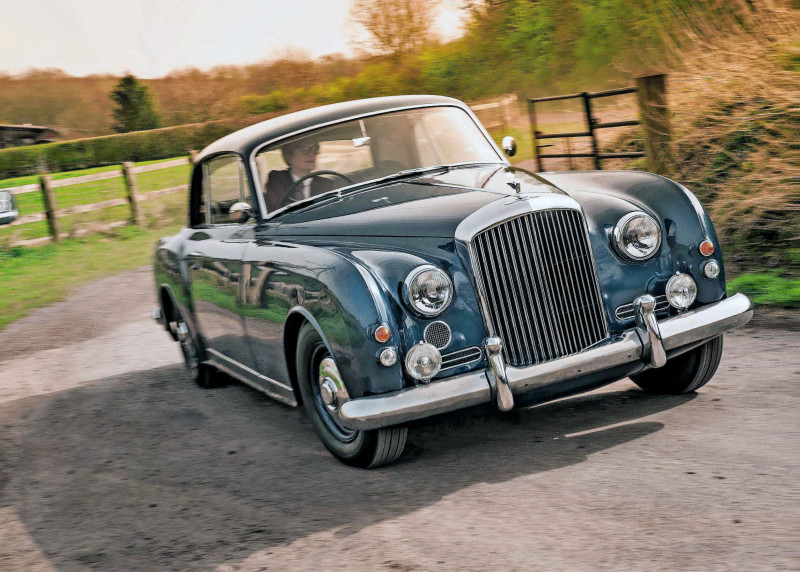
The shape could be nothing but Bentley and with good reason. Body design number 701 was sketched by Rolls-Royce and Bentley’s own chief styling engineer, John Blatchley. A total of 432 S-series Continental chassis were made between 1955 and 1959, and only 69 received a Park Ward 701 body.
Amongst this exalted number, chassis BC.63.BG is special. The Midnight Blue car boasts a range of vanishingly rare features that tailor the Bentley to the team-owner’s exacting tastes, not least the four-speed synchromesh manual gearbox. Only three cars were equipped with both the 701 body and a manual transmission. One was owned by the Countess of Suffolk, another by American racing impresario Briggs Swift Cunningham II. Tony Vandervell kept the third from delivery in 1957 until his death in 1967, using the Continental to attend events contested by his beloved Vanwall racers.
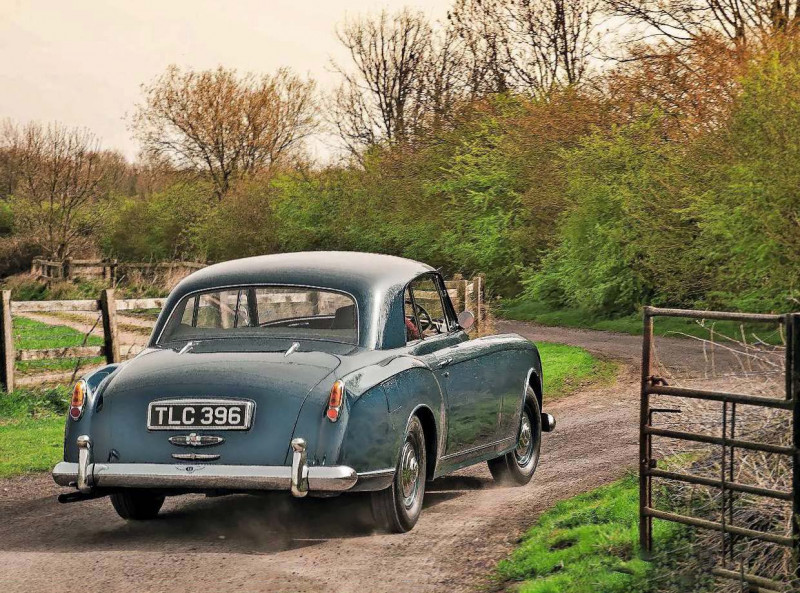
Parked behind the pits at British and European Grand Prix circuits, the Bentley held a front-row seat for Vanwall’s two triumphant seasons. Collected by Vandervell on 9 January 1957, the S-series had arrived just in time. Six months later – after three years of trying – the patriotic Formula One team scored its first grand prix victory, at the British Grand Prix. It ignited a winning streak for star drivers Stirling Moss and Tony Brooks, and rookie Stuart Lewis-Evans. Moss would win two more races in 1957 and the trio combined forces to secure the 1958 International Cup for Formula One Manufacturers.
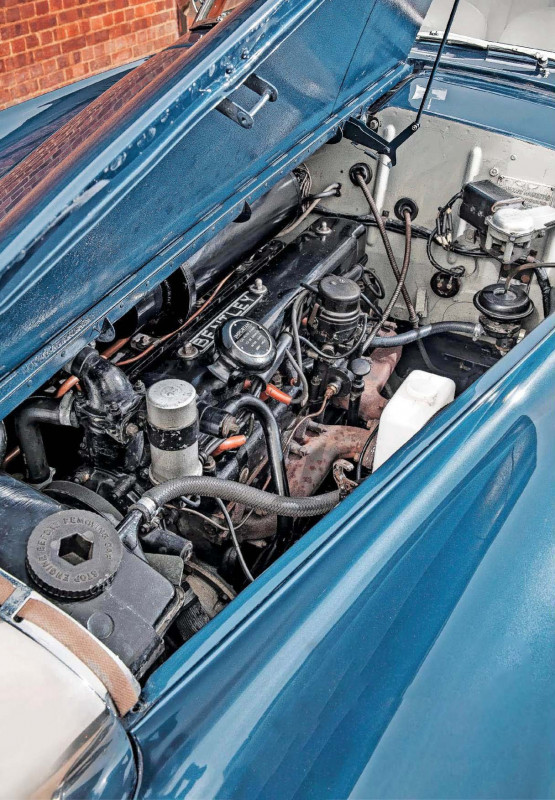
Thoughts of the authoritarian Vandervell spurring his team to victory flood my mind as I climb up into the throne-like driving seat. Perched upright on soft grey leather, I can meet the stare of modern Range Rover drivers as I peer down the long, centre-hinged bonnet to spot the Flying B. I feel imperious. The 18-inch steering wheel at my chest and the short, kinked gearlever by my right knee place me in immediate command on my surroundings, while the satin sheen of the burr walnut dashboard hosts all the information I could possibly need about my steed and the world around it. I twist the centre-mounted key and watch the Smiths tachometer dance a little before it settles to a 700rpm idle, then lean in for a closer look. I’ve found the first of Tony Vandervell’s customisations; the dial measures engine rpm around its inner ring, with the speed equivalents in the direct-drive fourth gear arranged around the outside. Twin duties are also carried out by the main speedometer, which measures both mph and kph for easier reading on continent-crossing jaunts. Flashing headlights and high-frequency horns were also installed for the industrialist, perhaps to clear slower traffic out of the way…
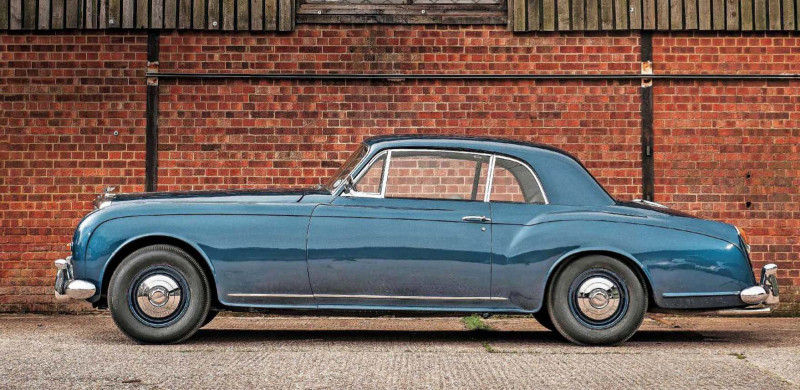
I’ve got no need for either as I pull away. Continentals have a more direct 18.7:1 steering ratio than non-power-assisted standard Bentley S-series saloons but it can’t compensate for the car’s staggering 525cm overall length, so the chromed radiator grille yaws lazily around junctions as I grapple with the wheel. Vandervell’s car is a strenuous experience at parking speeds and the clutch only adds more difficulties. Mounted to the extreme left, the pedal provides a soft, progressive bite but demands ankle-twinging effort to fully depress. Stop-start traffic renders the car heavy and blunt; it belongs on faster roads.
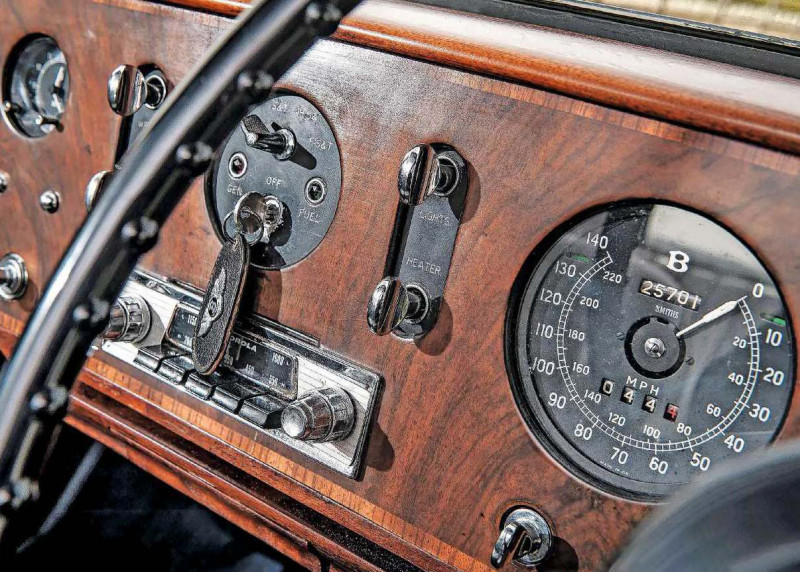
Independent front suspension and all-round hydraulic dampers award the Bentley surprising fluency as my pace grows. Bumps traversed at urban speeds create a lazy swell – the hefty body-on-frame assembly heaving in a slow up-down motion to speed bumps or potholes – yet the car’s weight plays to its advantage on open roads. Smaller imperfections are seen but not felt, the Continental gliding over adverse cambers and rippled tarmac, while even the biggest shocks can’t distract the car from its line. The heavy nose bobs through compressions and the leaf-sprung rear axle hops over lumpier surfaces but I never need to make a steering correction.
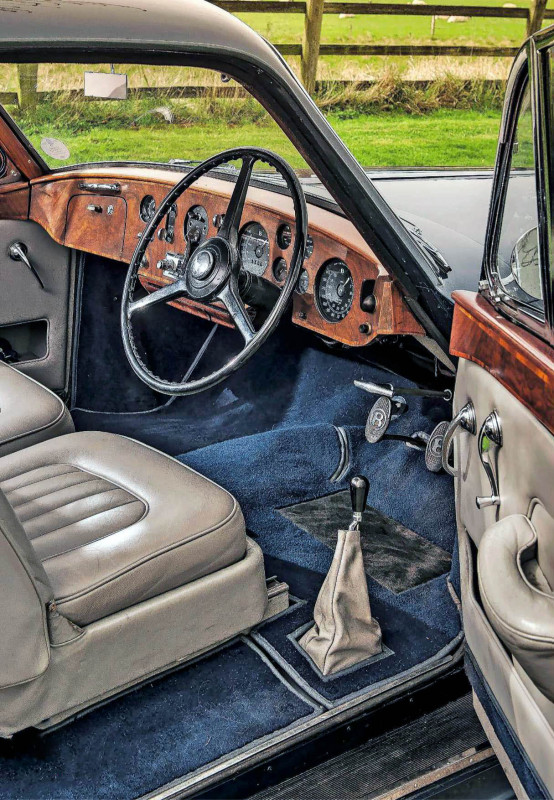
So long as I account for pronounced initial body roll, I can guide the Bentley with unhurried relaxation. The initial weight of the unassisted cam and roller system falls away at speed, leaving behind a light, elastic initial response that cushions my wrists from occasional scuttle shake and kickback from the road below. Initial response is dimmed but security and weight return when I lean the car into longer corners, the Continental firming up into committed yet languid movements.
The S-series Continental was designed for autoroutes and day-long drives, following a Rolls-Royce tradition that stretches back to the 1930 Phantom II. The first Continental was a faster, sportier Rolls-Royce built for European autoroutes. Chief project engineer Ivan Evernden – head of the Bentley Experimental Division and a former member of the Phantom II development team – revived the nameplate in 1950 with the same attributes in mind. Working with John Blatchley and select colleagues, he transformed a Bentley R-type saloon with wind tunnel testing, all-aluminium fastback styling, an uprated 153bhp inline-six and a longer final drive to create a prototype two-door coupé.
He’d created the fastest four-seater in the world. Testing at the French circuit of Montlhèry yielded an average lap speed of 118.75mph with a maximum above 120mph. Public response was favourable and the R-type Continental entered production in 1952. Bentley built 208 Continental chassis over the next three years and the concept endured when Rolls-Royce unveiled a new box-section steel chassis in 1955.
Longer and heavier than before – with a standard radio and fewer aluminium parts – the S-series Continental otherwise mimicked its R-type predecessor. Coachwork was by the company of your choice, power came from a 180bhp inline-six and top speed rose to an estimated 125mph, all for an average purchase price well beyond the related Rolls-Royce Silver Cloud saloon and its standard Pressed Steel body.
The Continental nameplate bestowed performance and prestige for around £8000, in an era when a Morris Minor retailed for £602 and the average house cost £2021. Bentley sold 432 coachbuilt S-series before production ceased in 1959.
Luxury was an important consideration for many S1 Continental owners. Air conditioning and power-assisted steering were popular cost extras – though Vandervell forewent both – and a General Motors-sourced Hydramatic featured as standard fitment. The four-speed automatic gearbox proved overwhelmingly popular. Introduced towards the end of R-type production, it was already the sole choice for ordinary S-series saloons. Bentley still offered its enduring four-speed synchromesh manual as Special Equipment for the Continental chassis but barely a dozen owners took up the option. Tony Vandervell was among their number.
The short straights and knotted corners of the A338 vindicate his decision. A Fifties automatic would blunt the Bentley on a road like this, sliding up to fourth at every opportunity and only kicking down long after I’d asked for full throttle. The H-pattern by my right knee lets me drive with far more vigour. I click back to second as the tarmac lurches downhill towards a tightening turn, using engine braking to hold the Bentley’s two-ton heft in check, then hold the gear to accelerate away to the hardened tenor the exhaust produces above 3250rpm. Shifting back to fourth lets the engine rest as I float down the next straight, safe in the knowledge I can downshift in an instant for the responsiveness I’ll need in the next corner.
Each gearchange brings me closer to the Continental, trimming away its imposing grandeur to turn me into a decisive factor in how we travel down the road. Operating through a clearly defined gate with a long yet narrow action, the short shifter demands a strong hand but moves with absolute conviction. Gears click home with the oiled momentum of an exposed-gate Ferrari transmission, while heavy right-biased springing pulls the lever across to make shifts between third and fourth into quick, straight flicks.
It’s a tactile delight but rarely necessary. Building on the lengthened 2.92:1 final drive it shares with Hydramatic-equipped Continentals, the manual uses longer first, second and third ratios than its automatic counterpart to drastically reduce the need to switch gears. Substantial low-rev torque furthers increases the Bentley’s flexibility, ensuring the 4.9-litre engine will pull any of its forward ratios from 1200rpm.
Ample performance arrives soon after – the Bentley doesn’t need to rev like a Bristol or Jaguar XK to produce its power, nor does it front-load its abilities like V8 Cadillacs and Lincolns. Hauling with an unwavering exhaust hum, the inline-six surges forward from 1500rpm to 3750rpm with constant conviction.
There are no peaks or troughs to the delivery, though a slight accelerative swell past 3000rpm encourages my enthusiasm. More often I stay between 2000 and 2500, though, enjoying how the honeyed exhaust burr mixes with the gently eddying steering wheel and the occasional swell from the chassis.
The experience is archetypally Bentley, which no doubt appealed to Vandervell. He ordered his S-series in 1956 after 18 continuous years with the marque, having owned a 1938 4. Litre by Park Ward and a 1946 MkVI with one-of-two Freestone and Webb coachwork. Construction progress for his final Bentley was rapid. The chassis arrived at Rolls-Royce Lillie Hall on 28 September 1956 and the completed car left for supplying dealer Jack Barclay Ltd on 31 December the same year. Heavily discounted before delivery – it’s supposed that Vandervell’s company supplied bearings to Bentley and Rolls- Royce – the Continental cost Vandervell Products Ltd £6292 including almost £2400 in Purchase Tax.
Though the car appeared at several international race circuits over the next few years – including a trip to the 24 Hours of Le Mans where it parked alongside Cunningham’s near-identical S-series – the Continental became less prominent when Vandervell withdrew from front-line racing in 1959. He died in 1967 and BC.63.BG received a substantial overhaul around the same time. Andrew Wood – then a young apprentice, today one of the main figures behind specialist Rolls-Royce and Bentley restorer P&A Wood – completed the work to receive his Rolls-Royce engineering degree.
Stored alongside several Vanwall racers, the Bentley remained at the Vandervell Products Maidenhead headquarters in 1968 before being sold on. Several private enthusiasts owned the car over the next two decades, before it caught the attention of Travers Dering Nettleton in the late Eighties. He bought the down-at-heel Continental on the strength of its dashing bodywork and manual transmission, only stumbling on the Vandervell connection after reading a book on the model. After more than three decades of fastidious ownership, he decided to sell the car through Warminster-based SLJ Hackett.
As I luxuriate in the decadent cabin, with its pillow-soft ride and faint aromas of wood, leather and warm oil, the Continental feels like the ultimate grand tourer of its age. There’s no area where it’s excessive, yet plenty where it excels. The styling is distinctive without being brash; the chassis sweeps smoothly along the road but the direct steering and inline-six still reward involvement. Each flick of my right foot unleashes enough performance to sweep past traffic, while the gearlever tucked just out of view down to my right promises extra sound and power when the drive catches me in a sporting mood.
Thundering across Wiltshire, it strikes me that I don’t want my journey to end. The Bentley feels unstoppable. I could drive for hours more, always involved but so cosseted by the soft ride and driving seat that I would never feel fatigued. Vandervell never sold BC.63.BG and I understand why – there was simply no car that could replace it. A Mercedes-Benz W189 300D looks austere in comparison, a Cadillac Series 70 Eldorado Brougham too chintzy, a Rolls-Royce Silver Cloud not sporting enough. Even the successor S2 Continental – with its 6.2-litre V8 and compulsory automatic – has a different spirit to the Vandervell machine. An S-series Continental was the best car you could buy in 1957. It remains one of the greatest British classics, and the four-speed manual makes it mightier yet.
Majestic Design 701 adapted from Blatchley’s R-Type shape
‘There’s no area where it’s excessive; plenty where it excels’
TECHNICAL DATA 1956 Bentley S1 Continental
- Engine 4887cc inline six-cylinder, inlet-over-exhaust valves, two SU HD8 carburettors
- Power and Torque 180bhp @ n/a, torque n/a
- Transmission Four-speed manual, rear wheel drive
- Steering Cam and roller
- Suspension Front: independent, unequal length wishbones, coil springs, Rolls-Royce hydraulic dampers, anti-roll bar. Rear: live axle, semi-elliptic leaf springs, Rolls-Royce hydraulic dampers with electronic control, axle control rod, Z-bar
- Brakes Servo-assisted. Front: hydraulic drums. Rear: hydraulic and mechanical drums
- Performance 0-60mph: n/a.
- Top speed: 125mph
- Weight 1930kg (4256lb)
- Fuel consumption 13.6mpg
- Cost new£7190
- Classic Cars Price Guide £150,000-£475,000
SU carburettor and raised compression ratio are late production enhancements Body built in Willesden; finished car collected from Jack Barclay Ltd Fresh carpet fills sumptuous boot
‘The honeyed exhaust burr mixes with the gently eddying steering wheel and the occasional swell from the chassis’
Hefty door sets tone for stirring drive Vandervell Continental crackles with a touch of Bentley Boys spirit
Ex-Vandervell Bentley S1 Continental
OWNING AN S-SERIES CONTI’
Travers Dering Nettleton has owned every classic you can imagine, from a Ferrari 250GTO to a Citroën Traction Avant that led to an inadvertent meeting with Charles de Gaulle. The Vandervell Bentley is one of his favourites. ‘My Continental fulfils the perfect role – it purrs along and the engine is bulletproof. What a car to drive to all the European grand prix!’
‘It needed tender loving care when I bought it – just like the numberplate says – and I’ve given it exactly that. P&A Wood knows the car very well and I had a lot of work done at Fiennes Restoration too. Hoffman’s of Henley fabricated and fitted a new rear window, I’ve had the doors re-hung and sections of the paint have been touched up too. ‘Frank Dale and Stepsons did another £35,000 of work last year. They rebuilt the engine and gearbox, then replaced the clutch thrust bearing, and it has come back purring. The upholsterer under the same roof has fitted new Wilton carpets too, and the headlining is a replacement piece. Including a recent set of crossply tyres, I must have spent £100,000. When I find something special, I believe in looking after it.’
‘Smaller road imperfections are seen but not felt; The heavy nose bobs through compressions’ Dash-mounted Radiomobile adds more luxurious focus
Regal driving position looms above traffic
Special-order gauge cost Vandervell £8.0.0. Imperious styling once hid a set of optional high-frequency horns. Vandervell specified Michelin radial tyres
Right-hand gearshift an R-Type inheritance; Unrestored walnut dash gives Vandervell-era view


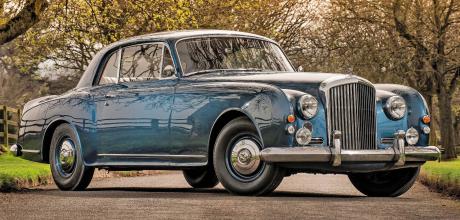
Vandervell’s Bentleys
The article on Tony Vandervell’s Bentley (Last Lap of Luxury) had particular interest because I have previously owned and currently own a Bentley with a Tony Vandervell connection. My third of six S-Type Continentals owned over nearly 40 years of driving these cars was an S2, two-door coupé previously owned by him. He may well have kept the Park Ward car featured until he passed away but he supplemented it with the two-door V8 version, covering 95,000 miles in less than three years early in its life. My current restoration project is a MkVI two-door coupé, B 381BG, by Freestone and Webb built for Vandervell Products and delivered in 1948, so presumably the second of the two MkVIs mentioned in the article. I found the car in Melbourne in a near-derelict state while on a BDC tour to Tasmania three years ago. I’ve owned three S1 Continental fastbacks by HJM. The first, a scruffy auto, acquired when our second child came along in 1983 because I couldn’t fit a child seat together with a carry cot in the back of a 911. Subsequent to both the S2, two-door cars above and an R-type Continental I acquired a manual S1 Continental by HJM, but the ’box didn’t suit it and even a clutch change failed to cure the clutch judder when setting off.
Just-in-time bearings
The feature on Tony Vandervell’s Bentley S1 Continental (Last Lap of Luxury) revived happy memories of my first job after university. I joined GKN’s graduate training scheme in September 1968 and was posted to Vandervell Products the following year. This was one of the world’s largest producers of engine bearings with an annual output of around 180 million pieces, and had been acquired by GKN in 1967 following the death of Tony Vandervell. When I joined there were two factories, Park Royal and Maidenhead, where a striking characteristic was the extremely wide aisles between various production operations, designed for Tony Vandervell to be chauffeur driven in the Bentley, allowing him to see what was going on around the factory without the need for any walking!
Vandervell bearings, especially those with lead indium overlay, were regarded as the best and were favoured by premium marques and racing teams. They were fitted to Rolls-Royce/Bentley and Jaguar engines. One of my jobs was to maintain contact with major customers to forecast future demand. On one occasion I was about to leave Maidenhead in my Austin 1100 for a periodic visit to Jaguar’s Radford engine manufacturing facility when a colleague flagged me down and piled boxes of engine bearings into the boot. My contact at the other end was more interested in seeing them than me because it enabled the engine line to keep going for the rest of the day. Just-intime sourcing in the motor industry is nothing new!